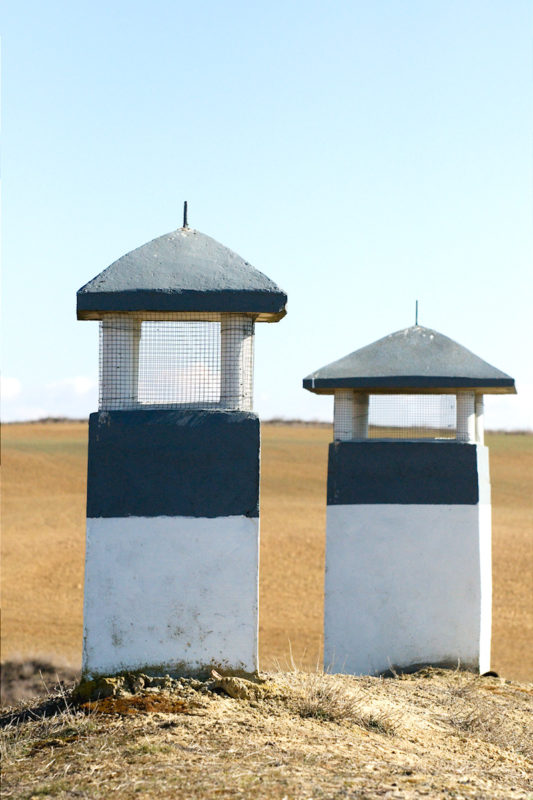Portugal isn’t what you’d call a mountainous country, no one in their right mind would put Portugal in the same pot as Switzerland or Nepal, but it’s geography is radically different from Spain, specially in its northeastern border that separates Portugal from the Spanish provinces of Extremadura and Castilla y León: on one side the hills and mountains of Beira Interior and Trás-Os-Montes, on the other the plains that dominate the landscape of central Spain. As myself and Ruben were driving close to the border we could easily see those plains, spot the other side of the border from a distance. As we crossed the border at Vilar Formoso (the gateway of the Portuguese diaspora), on our way to Tierra de Campos (a loosely defined region that consists of a plateau of farming stuck in the middle of Castille y León), the slopes rapidly were replaced by endless flat fields.
Our destination for this short photo trip were the Villafafila lagoons, a winter refuge and resting ground for many of the migrating birds that fly over the Iberian Peninsula. The plan was to photograph huge flocks of geese as they land on those lagoons everyday by sunset to rest. But plans often derail, and an unusually dry winter meant the shallow lagoons ran out of water and most birds left Villafafila earlier than usual. All there was left behind was what makes Villafafila similar to all the other places of the region: the farming fields with its scattered dovecotes (some in ruins), the decaying and abandoned villages, the funny little hills with chimneys on top that in fact are cellars buried on the ground. Most were locked, some just collapsed in ruins but one had the owner at the door, who showed it to us, with its dogs photos like trophies, while offering some wine.

The lack of water meant that where cereal should be blooming remained as a dusty field.

Geese flying in formation close to the lagoons at Villafafila

Dovecotes in a farming field, although some were recovered many are in ruins.

Mallards resting at the lagoon

Old adobe dovecote in ruins.


Dovecote on a dramatic sunset

Ventilation chimney for the underground cellars

Abandoned cellar with a collapsed ceilling

Walls covered with photos and other trophies

Everything ended with a bottle of wine and some canned clams.




Leave a Reply